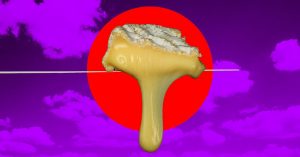
Milk component retention is not just a way to make dairy processing more sustainable and to provide consumers with a wider range of foods. It has to do with efficiency. Therefore, optimizing cheese yields is a matter of economic sustainability for the plant and can be achieved by retaining the milk components in the most efficient way in the finished product.
In the current complex scenario, characterized by high competition in the dairy market, more demanding consumers, and environmental and market challenges, measuring and maximizing yield efficiency becomes a must. Thus, predicting cheese yield is the most effective way to foretell costs, estimate the budget and define pricing. Moreover, it offers multiple advantage in terms of plant and process management.
The first practical consideration should be made on inputs (from raw milk, to cream and whey) and outputs (cream recovered from standardization, whey from processing operations, etc.) of the cheese making process: processors will immediately understand how the determination of mass balance is a complex operation.
The highest benefit from all milk components is achieved with maximized retention in dairy products, especially if we consider that, with respect to cheese yield, producers’ goals are in general:
- milk component standardization to get the highest value for each of them;
- to maximize cost optimization;
- to achieve good quality;
- to minimize milk component losses (fat and casein in whey).
Another practical consideration, which allows an overall understanding of the potential results of processing, is about the factors that affect cheese yield. We can identify factors that can be controlled on farms, namely those related to milk quality (high somatic cell counts, contaminating bacteria, pathogens, impaired temperature, etc.) and milk composition (genetics, nutrition, animal health, season, stage of lactation, etc.). Due to the correlation with cheese yield, protein and fat quality has a significant role in yield prediction.
During cheese processing, in addition to the effects of salt and moisture, some operations influence the retention of milk components in the finished product. Taking process parameters under control is critical, as deviation from the optimum may dramatically impair both success of the operations and cheese yield. Here some examples: careless cutting may lead to loss of fat and proteins in the whey and to fines; fast heating at early stages of curd cooking may generate a higher tendency to break up and release fat and protein in the whey; protein loss are caused by proteolytic cultures or coagulating enzymes before and after cutting.
To predict cheese yields, many formulas exist and can be used in different ways. As reported by Emmons and Modler (2010), formulas can be applied to predict cheese yield from new recipes, but to understand the yields in cheeses of different composition as well. Formulas can be useful to adjust the observed yield to a standardized one. They can be strategic tools to assess accuracy of analysis, measurements, sampling. They would be able to suggest that a problem exists rather than identifying the problem.
For effective prediction of cheese yield, experience is important as it allows to have a solid general understanding of the specific process, best guiding the prediction and interpretation of formula results. Alpha-Solutions consultants face the challenge of cheese yield prediction daily, calculating and adapting it to the most varied needs of the companies that rely on their support. Contact the Alpha-Solutions team to optimize the yields of your system!
References
Arthur Hill and Mary Ann Ferrer, 2021. Cheese Making Technology E-Book.
https://books.lib.uoguelph.ca/cheesemakingtechnologyebook/
D.B. Emmons, H.W. Modler, 2010. Invited review: A commentary on predictive cheese yield formulas1 , Journal of Dairy Science,
Volume 93, Issue 12, 2010, Pages 5517-5537, ISSN 0022-0302,
Doi: https://doi.org/10.3168/jds.2010-3262.
Senior Technical Consultant
Alpha Solutions, Food and Ingredients
mlo@alpha-solution.it
























